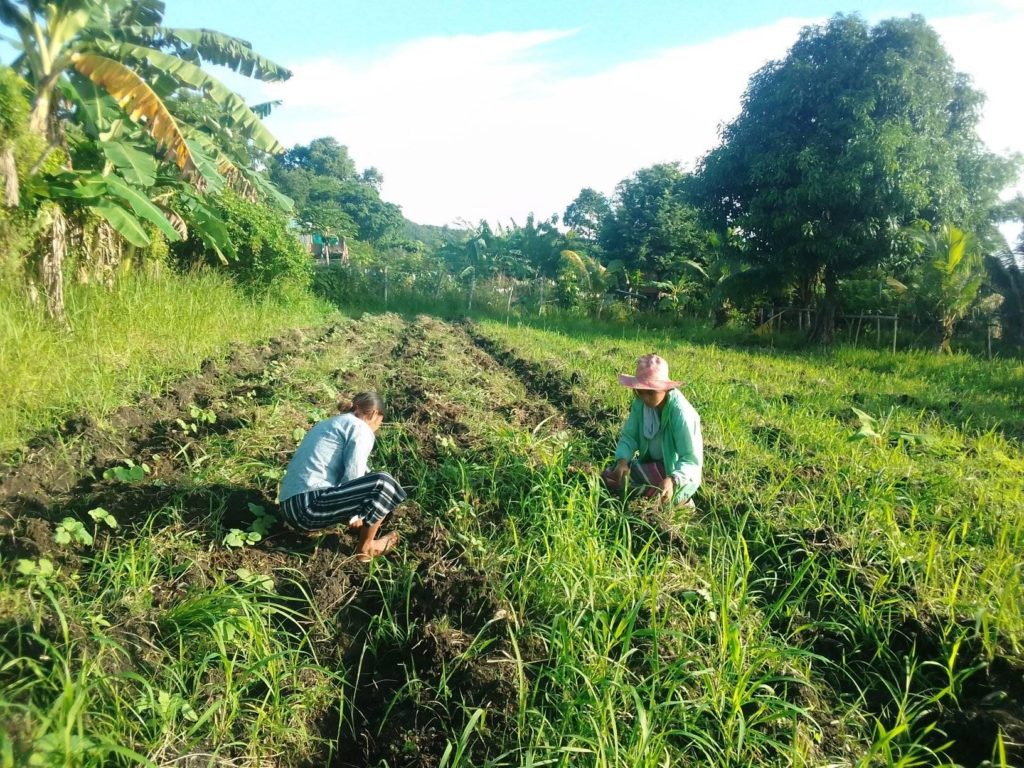Show Us the Way
Back in the day – and that day would be sometime in the early 1970’s – my then-young family and I walked into a church community about which we had heard vague but enthusiastic praise. What we saw first amazed – and then completely captivated – us.
All around the worship space, we saw folding chairs forming horseshoe-like clusters inviting us to join with one of the small group of worshippers who were able both to face each other and the central space. Within each semi-circle, we found small tables laden with fruits and cheeses, breads and pastries, juices and wines. Daisies spilled out in vases and baskets everywhere, on floors, tables, the piano, atop the fireplace mantle at one end and gracing a huge tree of life mural at the other. Musicians and singers welcomed us and enlivened our spirits with joyful contemporary jazz and rock tunes. Then children, including our own, playing outside answered the calls to come in. They, too, were integral parts of this diverse community. The coordinating minister (We learned later he believed we were all ministers and he was just the coordinator) took his place among us, and the celebrative “agape feast Sunday” liturgy began.
The challenge that faced the conservative, staid, Protestant denomination that eventually led to the establishment of this very unusual version of itself is comparable to the one which for years had faced other Protestant and certainly our own Catholic church: stale rituals, archaic outlooks, exclusion, irrelevance, and the resulting alarmingly persistent reductions in membership, especially of families and young people. Bravely, for such a conservative entity, however, this denomination had decided to take the kind of radical step we Catholics can only dream of. It allowed a radical experiment of re-envisioning “a new expression of church for a new day” specifically designed to entice those disenchanted and alienated by its own traditional religious practices and language.
This “new church for a new day” kept liturgy as a framework but incorporated varied forms of music, drama, and dance. Sometimes the coordinating minister (a Princeton Theological Seminary graduate – not too shabby there!) presided, and sometimes women as well as men did. Children were part of everything. The community was diverse in race, age, economic background, education, and talent. Social justice actions predominated, including anti-war and nuclear missiles protests and peace witnesses (Phillip Berrigan once spoke at a liturgy) and peace and justice missions to Nicaragua. The church kept changing, too, evolving. We proudly celebrated one of our members when she became the second woman ever ordained by that denomination. Other women from the community would shortly follow.
It had flaws, of course. It also worried the parent denomination more and more as it grew even more widely inclusive of ideas and membership. Their leaders finally took action to curb what it saw as excess and demanded that all community members stand up and declare that we “accept Jesus Christ as our Lord and Savior”. In solidarity with our Jewish, atheist, and undecided members, we refused. The denomination cut its ties. More drama and evolution happened after that, but the community is still thriving today. My family and I, however, had left long ago. Much as I loved that community, I deeply missed aspects of the Catholic Mass, and the predominance of the Eucharist, and the sacramental view of life.
But this experience with an experimental and new expression of church had shown me a way we, with our own issues of staleness, rigidity, exclusion, and decline might embrace both to preserve the valuable we love and infuse it with freshness we need. I have been looking for models for this ever since.
I stumbled on a gentle one recently thanks to a column in one of this April’s Global Sisters Report. The model was definitely not designed by the Sisters for Christian Community in the Philippines in any way to be an alternative expression of the Catholic Church. In fact, they might be perplexed that I would see it that way – but I do. See what you think.
The project is Caritas Bliss Eco Farm. The reporter describes it as a farm that “teems with organic trees, fruits, vegetables and herbal plants known for their medicinal and healing qualities, nourishing the sisters with daily meals while providing a source of livelihood to poor families. Farm produce is sold by rural community mothers, (Italics are mine) and all profits go to them.” They have also cultured “lagundi” leaves which a manufacturer of herbal teas and supplements has purchased, and the sale of other products such as yellow corn coffee, passionfruit wine, coconut oils, vinegars, and fruit juices has increased revenues. The sisters offer “free tutorials and give away seeds. They also help in the food and school allowances of 50 university scholars of Caritas Manila.”

And they have created unique worship and meditation spaces. People gather under locally sourced bamboo and nipa buildings that complement the setting. Their electricity comes mainly from solar panels and water from rain collectors. “’Recycling’ is the operative word, and the use of plastic is prohibited. Trees felled by typhoons become benches. Lumber yard rejects are fashioned into chairs and planters. Old tricycle tires are turned into fences and trellises for climbing plants. Stones from the stream are used for landscaping.”
I couldn’t help thinking: What if we stopped spending so much money on bricks and mortar, on repairs and refurbishing, on heating and cooling our current enormous churches? What if we gathered instead in buildings constructed by local workers with locally sourced, recycled materials? Rather than in rigid pews, what if we sat on chairs that could face forward or toward each other at will? What if we included productive activities within our worship (Take out those pews and there would certainly be more space.) – not do away with liturgy we love – but turn it and our Eucharists into literally feeding not only each other but the human, animal, and plant community that needs us as we much as need it? And what if we do all this, not as a charitable sideline, but as integral to making the gathering and the liturgy and the Gospel and the sacraments alive and exciting and, yes, enticing once again?
It’s just a model, and I’m a dreamer, I know. However, practical people could and would bring forth what people like me miss, and all of us, together, would shape what is to be.


3 Responses
Absolutely perfect, Ellie, and another comment on the communion controversy as well.
For your consideration:
Musings on Human Supremacy, Religious Patriarchy, and Industrial Ecology
http://www.pelicanweb.org/solisustv17n05page1.html
Ellie, I celebrate your imagination and dream with you!